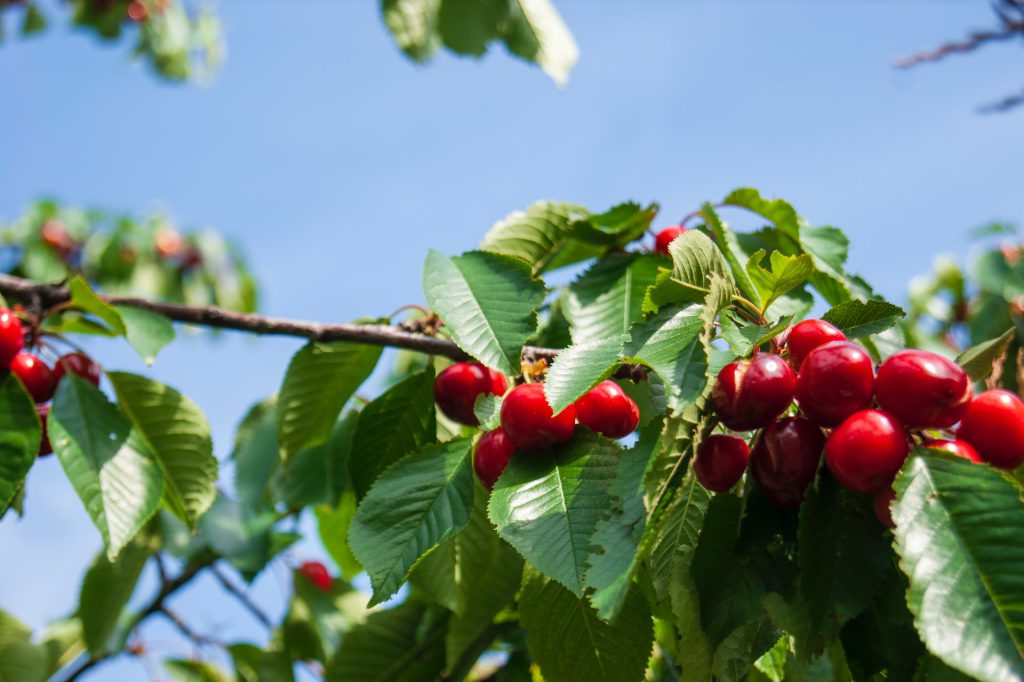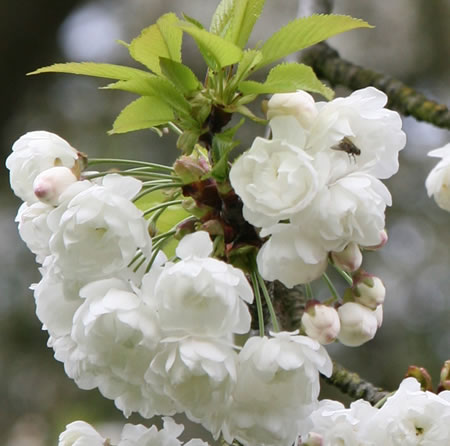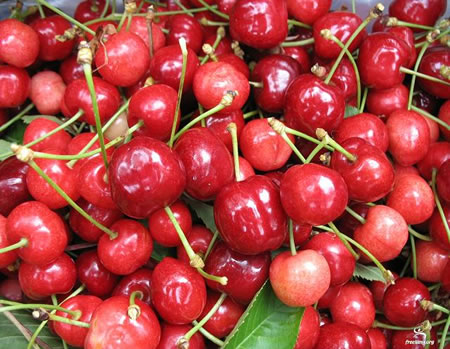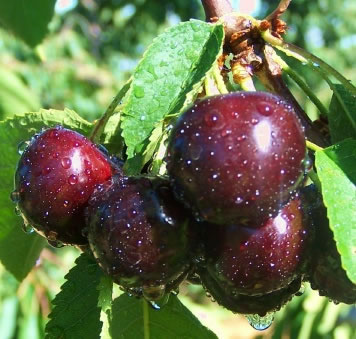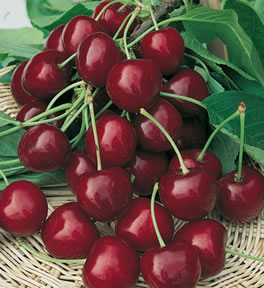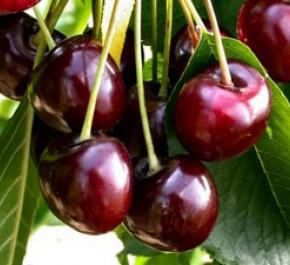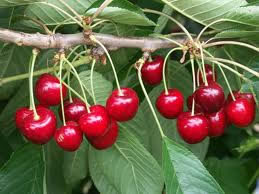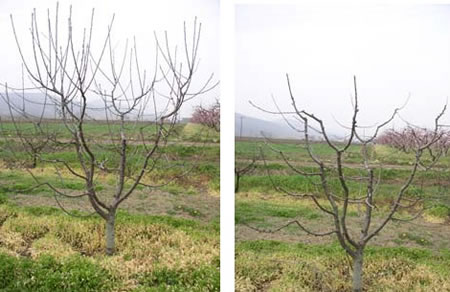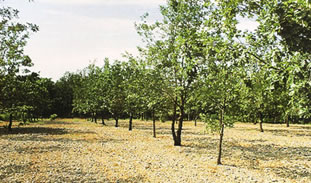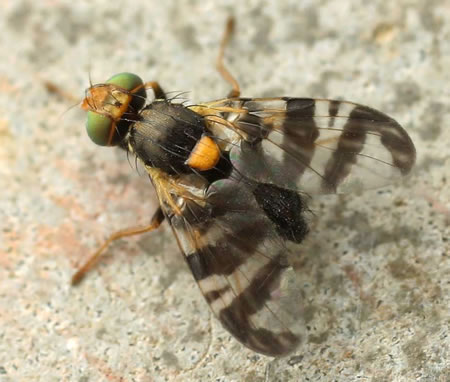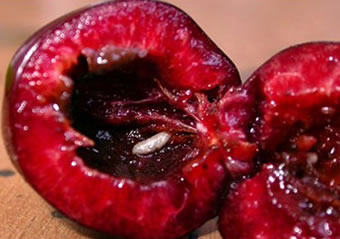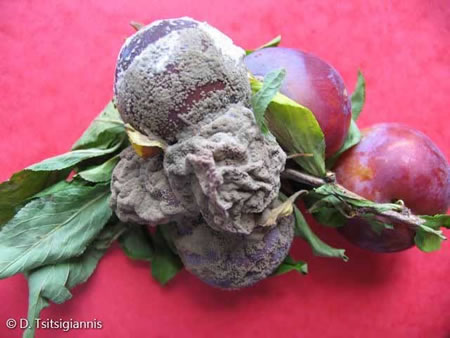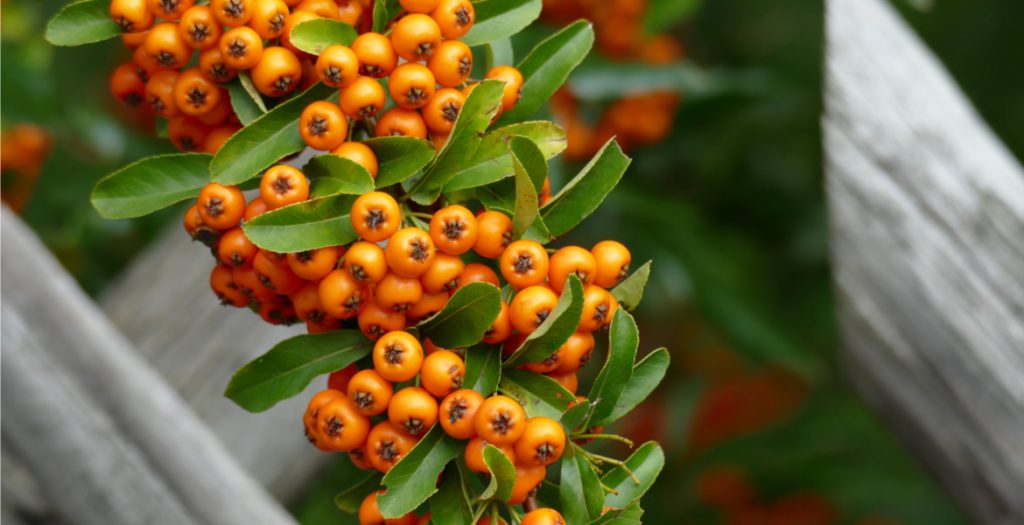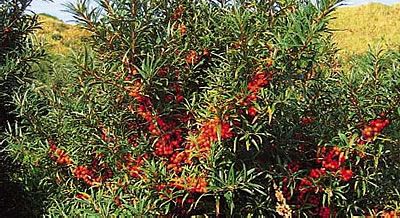Do you want to grow cherry trees in the garden? The cherry tree forms a lot of white flowers, which is why it is also used as an ornamental tree in city parks. The production of cherry trees in Greece depends on the weather conditions during the flowering and harvesting period. Rainfall during the flowering and ripening of the fruit can annihilate the year’s production.
Greece imports small quantities but mainly exports around 5-10% of the quantity produced to various European countries.
Significant quantities of cherries are produced in Italy, Germany and Turkey.
Figure 2. Cherry blossoms
Greek name: Κεράσι, Κεράσια (plural)
Scientific name: Prunus avium, family Rosaceae
Cherry varieties
The varieties of cherry are distinguished according to a) the color of the fruit, b) the hardness of the flesh, c) whether or not they require pollination and d) their height.
Cherry varieties based on fruit color
Depending on the color of the fruit, cherry trees can be divided into red, black and blond or blue.
Cherry varieties based on the hardness of the flesh
Depending on the hardness of the flesh, cherries are divided into: crispy and soft-fleshed.
Cherry varieties based on pollination requirements
Depending on whether or not they require pollination, cherry trees are divided into: self-fertile and sterile.
Cherry varieties based on tree height
Depending on their height, cherry trees are divided into: regular and dwarf, depending on their height.
To understand the difference according to the color of the fruit, I think the following photos will help:
Figure 3. Cyan Cherries
Picture 4. Red cherries
Figure 5. Dark Blue cherries
Cherry varieties contributing to Greek production
The varieties that contribute to Greek production are mainly the Edessa Tragana, Bakircheika and Bigarreau Burlat.
A) Crispy self-sterile varieties
1) Bigarreau Burlat: produces dark-colored, crispy, tasty and good-looking fruit. The disadvantage of this variety is that the fruit is easily torn.
The Bigarreau Marmotte variety is recommended as a pollinator.
Figure 6. Cherries of the variety Bigarreau Burlat
2) Bigarreau Van: it ripens a few days earlier than the Edessa Tragana and its fruit is black in colour.
Suitable pollinators are the Napoleon and Bing varieties.
Figure 7. The cherries of the Bigarreau Van variety are even darker in color and less “round” than the previous ones
3) Edessa Tragana ( Rupka or Rupkovo or Vodena): a variety that produces excellent quality fruit with a very sweet taste. Harvesting begins in mid-June and continues until mid-September in the mountainous areas of our country. In order to achieve a satisfactory result in terms of fruit size, the tree needs systematic pruning, irrigation and fertilisation (to be discussed below).
The Van and Napoleon varieties are considered good pollinators.
Figure 8. Cherries of the variety Edessa Tragana
4) Bakirtseika: a variety that ripens almost simultaneously with the Edessa Tragana, is cultivated exclusively, together with the Edessa Tragana variety, in the prefecture of Pella, Greece and contributes to 53% of Greek cherry production. A remarkable variety with good quality characteristics.
The Van, Napoleon and Edessa Tragana varieties are considered suitable pollinators.
Figure 9. Cherries Bakirtseika
B) Crispy autofertile crunchy plants
These varieties are suitable for areas where the spring is particularly rainy and cold and results in reduced tree production. Such a variety is Skeena, where the fruit is light red in color and large in size.
C) Soft-flesh
In this category there are varieties which are no longer propagated.
D) Varieties with low chilling requirements
Boy Argoub belongs to this category.
Climate and soil for cherry trees
The cherry should be grown where the climate is either very cold or very dry.
Ideal areas for growing cherry trees are areas with plenty of rain in winter, with cool and dry summers (semi-mountainous and mountainous areas, up to 800 meters).
Mountain slopes are the best areas for growing cherry trees, because there is good drainage, high relative humidity in summer and no risk of frost.
Locations that area susceptible to frost should be avoided.
The best average summer temperature for good tree growth is 25 degrees Celsius.
The cherry tree is more cold hardy than peach and apricot but less hardy than apple and pear.
The best soils for its growth (similar to that of the sour cherry tree) are those that drain very well but also retain the required moisture, i.e. deep, clay-loam soils (red soil) without calcium. A pH of 6.5-7.0 is considered suitable.
Cherry rootstocks
The most common rootstocks are wild cherry saplings (Prunus avium mazzard-option: F12/1), mahaleb (Prunus mahaleb-options: SL64, Cab6P and 11E) and MaxMa 14.
Mazzard seedling: the seed of this rootstock has germination problems and therefore you should do the following: put the seeds in tap water for 7-8 days (but change the water every day) and then put them in water at 21 degrees Celsius for 3 weeks (again changing the water every day) and finally for 120 days at a water temperature of 2-4 degrees Celsius.
Substrate F 12/1: not suitable for soils that are not aerated but is resistant to nematodes.
Mahalepio rootstock: the seed needs to remain in water for 24 hours in order to germinate. It is suitable for dry soil that is not well irrigated and properly irrigated.
The following rootstocks are dwarf and lead the tree to fruit quickly but are still being tested in various research institutions.
These rootstocks are Gisela 5, 6 and 12.
Planting cherry trees
In our garden we can plant cherry trees either in squares or rows although it depends on the rootstock. The current trend is to plant densely with rootstocks that give us fruit quickly and in combination with low pruning to make it easier to pick the fruit. If you want to plant self-sterile varieties in your garden, two or even three should be planted at the same time.
Pruning cherry trees
The cup is the most common shape for cherry trees when we have vigorous rootstocks and want sparse planting. The planting distance is 5-10 meters and is recommended mainly for mountainous areas where the soil is barren and work is difficult.
Figure 10. Cherry trees pruned as a cup
The next pruning is the high spindle pruning, where the planting distance is 4 meters and is applied in areas that experience frost. The trees start to produce fruit in the 5th-6th year and high yield is expected in the 7th and 8th year.
Figure 11. Cherry trees pruned in spindle shape
Another form of pruning is the Spanish Bush, which essentially resembles a low cup. We prune 1/3 of the length each year, from the top, and the planting distance is 3-5 meters. It is considered the most productive tree shaping system.
If we see that our cherry tree is fruiting excessively, it is a good idea to thin out the branches in late summer so that the wounds can heal before winter arrives. This way we also help our fruits to grow in size.
Irrigation of cherry trees
Irrigation in the cherry tree starts in early spring, continues throughout the summer at regular intervals and stops in the autumn when the rains begin. Irrigation requirements are particularly high in the months of July and August, when temperatures are higher.
Growing cherry trees in pots
The cherry tree can be grown in a pot as an ornamental plant. There are dwarf varieties that reach up to two meters.
Fertilizing cherry trees
The cherry tree has high nitrogen requirements but must be accompanied by increased potassium fertilization.
On cherry trees that have not yet given us fruit, in the autumn-winter period (before planting) we incorporate manure or compost (if we can) into the soil/pot soil.
In the period from early April to mid-July, which is the period of vegetative growth, apply nitrogen fertilization in frequent and small doses.
Then in mid-July to mid-August we apply potassium fertilization and in September, when the tree roots are developing, we apply phosphorus.
For trees that have entered the production process, the fertilization differs.
Thus, in summer we spray the foliage with trace elements, in September we spray the foliage with chelated zinc, in winter with zinc sulphate and in March we apply chelated iron to the soil.
Keep in mind that the cherry tree, from flowering to fruit ripening, should not be fertilized.
A common nutrient deficiency in cherry is that of zinc, where our trees show chlorosis and the leaves become having narrow width. In severe cases, drying of the shoots is also observed. Spraying with zinc sulphate in winter at a concentration of 3-5% corrects the damage.
Boron deficiency is also sometimes observed, where flowers do not develop and germination is limited. The leaves show chlorosis, become narrow and deformed. It is advisable to apply sprays of boron-containing substances.
Pests of cherry trees
The main pests of cherry trees are:
Cherry fruit fly (Rhagoletis cerasi)
The cherry fruit fly is the most serious pest of cherry trees. In the case of a dense population of the insect, the percentage of cherry trees affected can be as high as 50%. It mainly attacks the cherry fruit, where the insects lay their eggs and then open galleries in the fruit.
Figure 12. Adult of cherry fruit fly
Figure 13. Larva of cherry fruit fly inside a cherry
Figure 14. Nymphs (pupae) of cherry fruit fly
Control: when the population of cherry fruit fly is not large, we can use colored (yellow) sticky traps. If you do not notice insects in the trap, do not spray!
Another way of treatment is to spray with Decis 2.5 EC, after dissolving 0.4-0.5 g in a liter of water and Poleci 2.5 EC in exactly the same proportion, at the appearance of the first insects.
Capnodis (Capnodis tenebrionis)
The larva of capnodis attacks the roots of the tree, opens holes and destroys it. When the infestation is large the tree gives the appearance of being “dry”.
Control: similar to apricot.
Diseases of the cherry tree
Powdery mildew (Monilinia spp)
Powdery mildew causes damage to both flowers and fruit.
Figure 15. Powdery mildew on plums
Fighting: Preventively spray the foliage with Baycor 25 WP, dissolving 0.5-0.8 g/liter of water. It has similar control as powdery mildew on apricot.
Bacterial canker
Shot hole disease (caused by Stigmina carpophila)
Agronomist Sophia Papazoglou
Agronomist MSc “Environmental Management”
Tags: CHERRY TREE • CULTIVATION • DISEASES • ENEMIES • GARDEN • POLLINATORS • SOFIA PAPAZOGLOU AGRONOMIST • TREES

